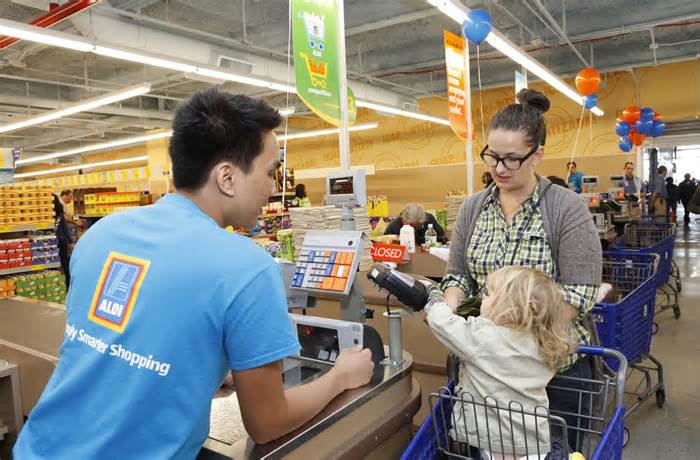For the move is likely a matter of strategic life and death.
While most Amazon Go sites range in size from roughly 1,000 to 3,000 square feet, some of Amazon’s latest efforts, like its Amazon Go Grocery store in Seattle, can get as big as 10,000 square feet and also come stocked with fresh produce.
It is the combination of these last two paragraphs that likely have Aldi on notice.
First, artificial intelligence computer vision (AICV, for short) checkout-free technology is hard to deploy. However, the sooner retailers can implement it, the better off they will be in the long-run because the technology also gets smarter and more efficient the more often that it is used.
AICV is not all that dissimilar from how autonomous cars get trained for the rigors of the road. The underlying technology that drives both is pretty much the same thing. So, while one pilot store is an achievement, Amazon having 30 pilot stores is like giving Usain Bolt a massive head start in the 100 meter dash because Amazon’s system is already training itself to handle many different driving conditions. These conditions could include everything from localized skus, lighting variances, fixture positioning, or even the number of people and products in a store at any given time.
In essence, the more Go stores Amazon has in operation, the smarter the Go system becomes.
Second, a 10,000 square foot grocery store gets awfully darn close to Aldi’s overall operational ethos and operating size. According to Aldi’s own website, Aldi’s U.S. footprints start at 17,000 square feet, and Aldi’s operating model is one of spartan-like efficiency. It is no frills shopping — just get in quickly, efficiently, and as cost effectively as possible from a consumer standpoint.
Amazon Go Grocery is not that far off Aldi’s design in principle, either.
For instance, square footage-wise, Amazon Go technology is probably just a few month-long or year-long Red Bull binges of hard core engineering work away from being ready for 17,000 square feet. Moreover, Amazon Go’s “Just Walk Out Technology” is designed to remove many of the same costs and friction points that Aldi’s model attacks with aplomb. Similar to Aldi, Amazon Go is also about making things easy, so easy, in fact, that it doesn’t even require cashiers or checklanes as part of its overall operating foundation in many states.
In essence, Amazon has the potential to do everything that Aldi can do, only better.
All of which smells like the now famous line Jeff Bezos once uttered — “Your margin is my opportunity.”
To Amazon, Aldi’s outsized market share growth and expansion plans must smell like chum in the water. Or, said another way, Aldi is Chrissie Watkins at the beginning of Jaws and Amazon is the great white shark. Even Amazon’s rumored Amazon Go expansion plans of 3,000 stores by 2021 is oddly close to Aldi’s stated growth plans, regardless of whether Amazon hits its own rumored timelines or not.
Coincidence? Maybe, but maybe not.
Regardless, it is reasonable to think that Amazon likely knows it has something in Amazon Go. Amazon Go can do everything Aldi does, only better, and in a way that doesn’t require that customers stand in line at checklanes and that also has the underpinnings of Amazon Prime, speedy delivery, and its estimated 100 million plus user base already behind it.
While an Amazon spokesperson declined to comment on any of the above speculation, if only a kernel of it is true, what that kernel says is powerful.
As smart as it is for Aldi to go after cashierless technology, Aldi really does not have any other option at this point. Amazon could very well have Aldi’s entire U.S. business model or more within its sights, and the only real question that remains is whether or not Aldi’s effort may be too little, too late.
I am a leading expert and influencer in omnichannel retailing, with nearly 20 years of experience across nearly every discipline within retail. Currently, I am CEO and
I am a leading expert and influencer in omnichannel retailing, with nearly 20 years of experience across nearly every discipline within retail. Currently, I am CEO and founder of Omni Talk, one of the fastest growing blogs in retail, and Third Haus, a retail technology lab and coworking space in Minneapolis. I also sit on the advisory boards of Xenia Retail and Delivery Solutions. Previously, I was the vice president of Target’s “Store of the Future” project and also the vice president of merchandising for home furnishings on Target.com. I began my retail career at Gap, Inc. and hold a BA from Stanford University and an MBA from the Harvard Business School.

